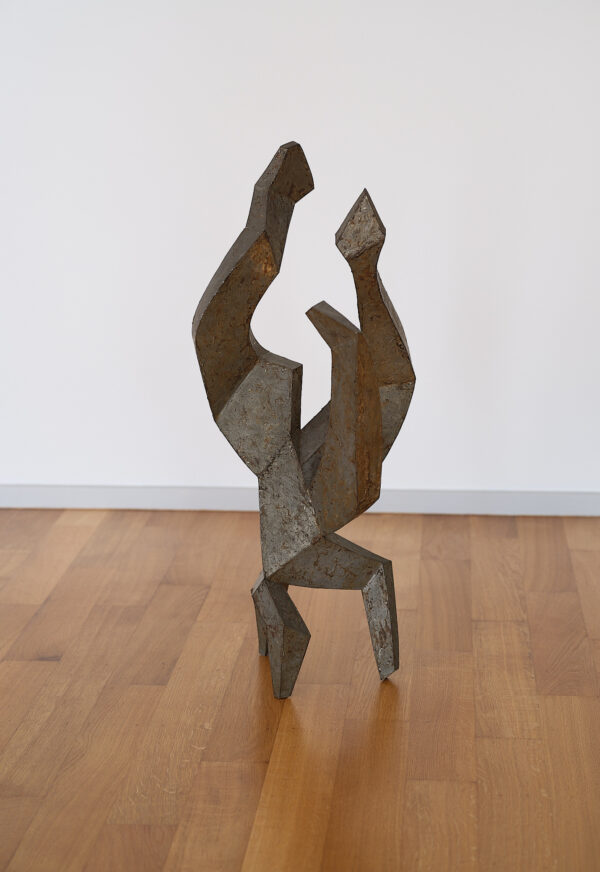Wil (Willibrordus Joseph) Leeuwens (called: Will) was born in 1923 and raised in The Hague. He got his first painting lessons during the war from his brother-in-law, the painter Jan Roëde and his instructor, the painter and poet Willem Schrofer. Until the end of the war, the two in-laws worked together in Roëde’s workshop, from which a tight friendship and collegiality with “Will” (an aggregation of Wil L.) emerged.
Like Roëde, Will directed himself to the art that was coming from Paris, which he visited shortly after the war. He was inspired by the works of Picasso and Matisse, and of the post-war École de Pais. Will gradually painted colourful, more or less abstract compositions, in which motives like stills were composed only of completely flat combinations of colour.
At the invitation of Willy Boers Will briefly joined Vrij Beelden in 1946. He took part in exhibitions until 1948. His work was classified as the most abstract of the group, but was also called “seeking” or “superficial”. Most of his activities took place in The Hague though, as a member of the Haagsche Kunstenaars Kring and the Pulchri Studio.
From 1948 onwards the carefully weighed and built up use of colour was joined by more spontaneous, more surrealistic work with irregular fantasy shapes gradually evolving into fantasy creatures drawn with thin and purposeful lines. These meticulously and carefully painted birds or insect-like creatures lived in a colourfull, poetic universe, referred to by titles like “magic dance”. This playful style of Will is highly reminiscent of works by Klee and Miró. He never abandoned abstraction though and in 1955 he joined the Liga Nieuw Beelden.
On occasion, he made sculptures, such as an abstract iron plastic from ca.1955, and during the sixties, there were also some wall paintings. But Will’s paintings and gouaches with their well-balanced compositions and colours are what he remains best known for.
